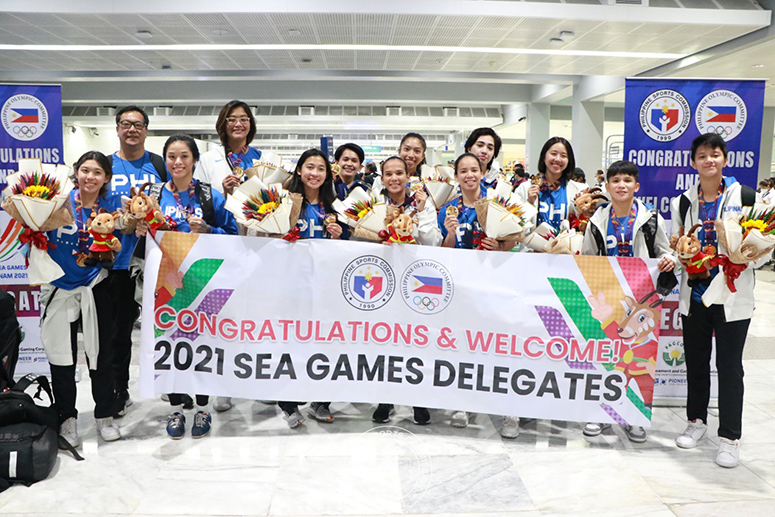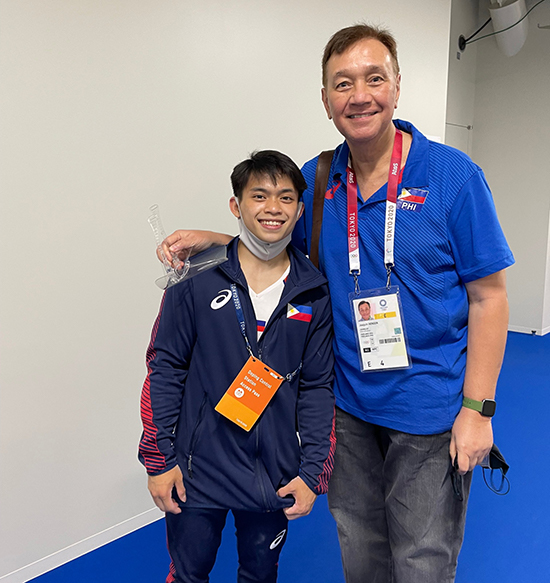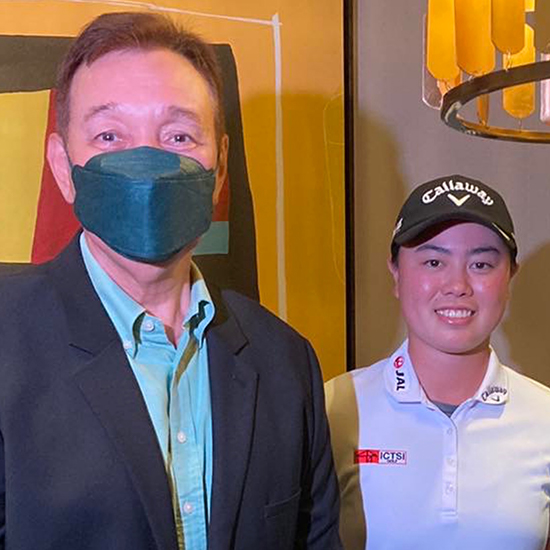Restudying the concept of a Department of Sports

The pandemic brought about an alarming impasse in the national program of sports development, stunting the growth of athletes at all levels as the country reeled from the effects of a global malaise. Online training became an alternative, but it took away the essence of working together, interaction and personal engagement with coaches and teammates. The government shut down school sports for over two years and professional athletes were given the go-signal to get back to the grind only under strict supervision of the Games and Amusements Board (GAB).
With the rescheduling of the Tokyo Olympics and Southeast Asian Games, national athletes improvised and managed to find training havens abroad. The boxing team set up camp in Thailand. The karate squad went to Turkey. Pole vaulter EJ Obiena stayed in his training quarters in Italy, gymnast Caloy Yulo kept busy in Tokyo, and weightlifter Hidilyn Diaz relocated to Malaysia. It was a logistical nightmare for the Philippine Sports Commission (PSC) and Philippine Olympic Committee (POC) to arrange domestic training camps for athletes with government imposing safety measures in bubble set-ups. Ironically, it was less difficult but more expensive to organize camps in foreign countries that were not as vulnerable to COVID-19.

.
The pause put off critical cornerstone events like the Palarong Pambansa, Batang Pinoy and Philippine National Games, creating a huge vacuum in the talent identification process of discovering next-generation athletes. Now that the situation has begun to normalize, and with a new administration in place, the time is right to reassess the value of sports in the national context and to put it on the right track.
Sports development, however, is an intricate process that begins with early talent education through grassroots programs on a nationwide basis, harnessing the resources of the DepEd and DILG.
As it is, sports carries a hefty price tag in the government’s expense ledger. The PSC, which is directly under the Office of the President, was appropriated P175 million to cover bare essentials and an additional P650 million for expenses related to international competitions in this year’s budget. Aside from the government appropriation, the PSC is supposed to receive 5% of the Philippine Amusement and Gaming Corp. (PAGCOR)’s gross revenues or about P200 million a month. Performance incentives for Tokyo Olympians amounted to over P35 million, and for SEA Games medalists and coaches, more than P90 million. The Department of Education (DepEd)’s usual budget for the annual Palarong Pambansa is about P200 million. The Philippine Sports Training Center has a construction cost of P3.5 billion with a planned opening in Bagac, Bataan, in 2025 as a PSC project. The National Academy of Sports will rise in the New Clark City under the DepEd’s supervision at a total budget of P1.9 billion. Including capital outlay, sports could easily be a P9 billion proposition this year.

Beyond the government’s financial support, sports also receives a boost from the POC and the private sector, easily a combined allocation of at least P1 billion. What appears disconcerting is that despite the enormous amounts laid out for sports, there is a lack of integration and synergy among the stakeholders. The Department of Education, for instance, has no expertise in sports management, yet it is in charge of the Palarong Pambansa and the National Academy of Sports because of the educational component. Technical assistance from National Sports Associations (NSAs) through the POC is provided in the conduct of events in the Palarong Pambansa, but accountability of organization rests with the DepEd. Sports is the overriding character of the Palarong Pambansa, and the education aspect is reflected only in the participation of high school students.
Through the years, sports has evolved into a pathway for a better quality of life, a source of honor and national pride, an inspiration to face up to the challenges of the modern world and a popular form of entertainment.
Sports development models vary from country to country in terms of funding assistance. The Australian Institute of Sport (AIS), for instance, is a division of the Australian Sports Commission, a body that is controlled and funded by the government. AIS is the principal engine for high-performance training and NSAs employ its facilities and services. The US Olympic and Paralympic Training Centers are campuses in Colorado, California, Michigan and New York where athletes live and work out while preparing for international competitions. They are funded by the private sector and do not rely on federal support. Developed economies are self-reliant on the whole, but developing countries such as the Philippines depend largely on government assistance with backup from the private sector.

Through the years, sports has evolved into a pathway for a better quality of life, a source of honor and national pride, an inspiration to face up to the challenges of the modern world and a popular form of entertainment. It isn’t just a spectator’s pastime, it’s also a primary influencer in society as a driver for physical fitness and a healthy lifestyle. There is a reason Article XIV, Section 19 of the 1987 Constitution provides that “the State shall promote physical education and encourage sports programs, league competitions and amateur sports, including training for international competitions, to foster self-discipline, teamwork and excellence for the development of a healthy and alert citizenry.”
Sports development, however, is an intricate process that begins with early talent education through grassroots programs on a nationwide basis, harnessing the resources of the DepEd and the Department of the Interior and Local Government (DILG). Then, athletes are brought to a stage to display their potential through Batang Pinoy for U15 youth, Palarong Pambansa for high school students and the Philippine National Games to ferret out elite performers. Throughout this process, both the PSC and POC coordinate closely in making sure athletes are given the proper scientific background to strive for excellence. Coaches, trainers and educators must be aligned in their focus while athletes are given the equipment to elevate to the next level. Specialized techno-tactical approaches, psychological support, high-level coaching and overseas exposure are key elements in the process to develop elite athletes in specific sports.

The PSC has established a Philippine Sports Institute as the science and technology center to enable athletes to progress with the times. With its mandate from the President, the PSC has done a yeoman’s job of putting Filipino athletes on the world map. The GAB, also under the President, has similarly attended to professional athletes and opened doors to unprecedented heights, particularly in boxing. Imagine if there were a Department of Sports that could integrate the sports activities of government with a common purpose, direction and focus. Imagine the savings if budgets were centralized and economies of scale realized. Imagine the confidence it could generate for more private sector support with a concerted effort to galvanize a vision for national sports development.
PSC chairman William Ramirez himself once said creating a Department of Sports would be a major advantage. “We could amend the law and stipulate that PAGCOR remit its five percent to the Department aside from a budget through general appropriations,” he said. “With a Department of Sports, the PSC would cease to exist. A Secretary of Sports would be at a Cabinet level and in a position to advance a genuine sports program. But even if there were a Department of Sports, if there is no inter-government collaboration and no direction, it will fail. The DILG, Department of Education, the private school system, the Armed Forces and the POC must be aligned in working toward a common goal. With a Department of Sports, we’ll be able to provide continuity with the best and brightest at the Cabinet level.”
The time for change has come.


